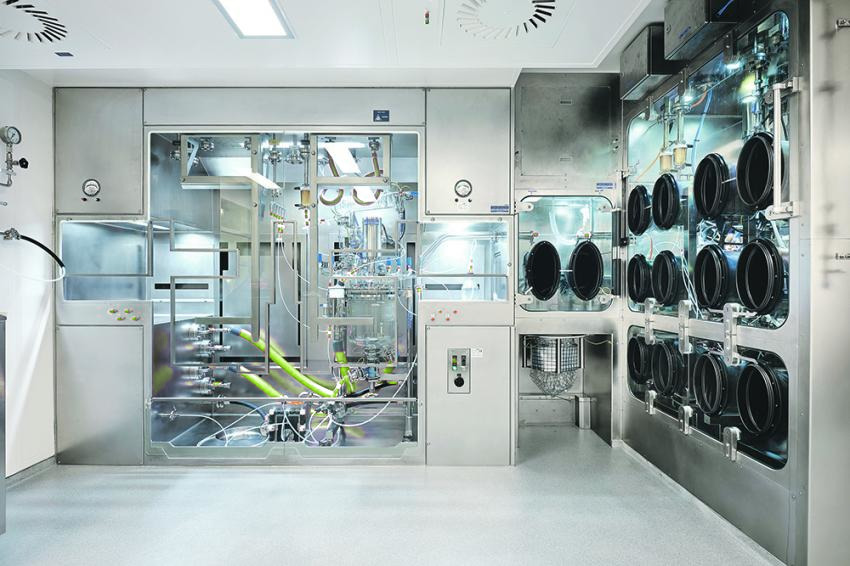
14 Apr What is OEB and OEL?
Personnel in pharmaceutical/ chemical manufacturing firms, particularly those who are exposed to a variety of chemicals, require safety while handling hazardous substances.
There are a number of chemicals and substances that are extremely dangerous which are referred to as Highly Potent Active Pharmaceutical Ingredients (HPAPIs). They have the potential to impact the operators’ health in numerous ways.
Containment systems are an effective way for increasing safety and limiting or eliminating personnel exposure to harmful compounds.
HPAPIs are classified into control bands (OEB) based on their potency, and occupational exposure limits (OEL) are used as a classification measure.
Let’s have a look.
What exactly is OEL?
Controlling exposure to hazardous chemicals in the workplace is an important aspect of a larger strategy for ensuring a safe and healthy environment related to the product or/and operator safety.
Occupational Exposure Limit (OEL) is a chemical concentration in the air to which all employees can be exposed to for 8 hours a day, 40 hours a week without experiencing any detrimental effects.
Following the establishment of an OEL, an evaluation of the manufacturing environment is carried out in order to identify the appropriate level of production process control. The values in the OEL are set to prevent occupational diseases, particularly in operators who are exposed to hazardous chemicals during the production processes.
What exactly is OEB?
The Occupational Exposure Band (OEB) is a medium for identifying and classifying substances based on their adverse health effects and potency considerations. It also aids in the grouping of chemicals based on OEL to establish safe handling standards.
These bands are assigned based on the toxicological potency of a chemical and the adverse health effects associated with its exposure.
Over the last several decades, the pharmaceutical industry and some major chemical companies have used occupational exposure banding to establish exposure control limits or ranges for new or existing chemicals that do not have formal OELs.

Level 1:
The material’s toxicity will not endanger the operator. It has an OEL of 100-1000 µg/m3. Containment, on the other hand, should be limited to simple local extraction or ventilation.
Level 2:
The toxicity of the substance poses a slight danger at OEB level 2. To avoid uncontrolled exposure to the operator, necessary precautions must be adopted. Its OEL is between 10 and 100 µg/m3. OEB Level 2 is nearly non-hazardous.
Level 3:
This signifies that some precautions must be taken to keep the operator safe. A simple barrier will be provided via isolators and glove bags. Split Butterfly Valves are commonly used to transmit material. Its OEL is between 1 and 10 µg/m3.
Level 4:
Chemicals or ingredients regarded as hazardous at level 4 of the OEB are listed as such. To keep the operator safe, significant precautions must be taken. To maintain the physical barrier between the material and the operator, isolators and RABS (Restricted Access Barrier System) must be implemented. Substance must be handled within the designated enclosure; with the operator operating the equipment and material via glove ports on the outside. Its OEL is between 0.1 and 1 µg/m3.
Level 5 and 6:
OEB levels 5 and 6 are extremely dangerous. Between the operator and the material, there must be a permanent physical barrier. Inside the isolators and RABS, closed material handling and transfer should be done through glove ports. Even inside the isolator, materials should not be handled openly and must be handled with RTP (Rapid Transfer Port) and split valves. Level 5 OELs are <0.1 µg/m3, and level 6 OELs are <0.01 µg/m3.
Wrapping Up:
To prevent hazardous material exposure, there must be a barrier between the operator and the material. Isolators and RABS act as an aid in the handling of products while simultaneously acting as a barrier. The difference between the two has been well defined in our previous blog.
To know more about Isolators and containment solutions, talk to us sales@isovax.in



Sorry, the comment form is closed at this time.